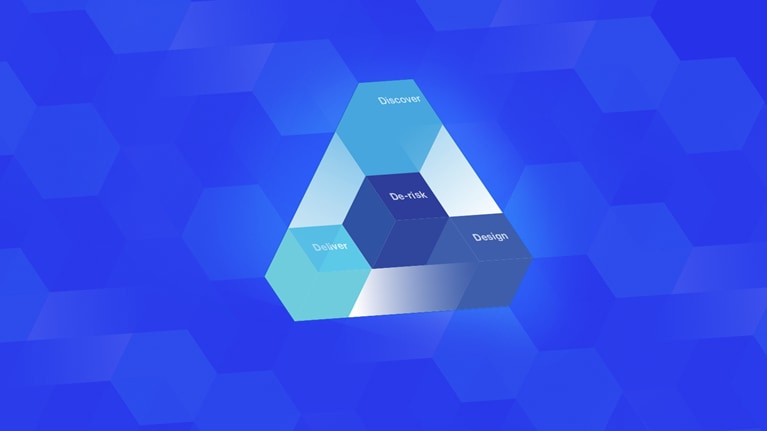New technologies and new ways of working are transforming the nature of work and—over time—reshaping the Australian and global economies. While the pace and magnitude of change varies significantly from industry to industry (and often from player to player in those industries), in each sector we looked at in this report, we saw fundamental changes underway. These changes are in the way organizations engage with their customers, the way they develop and deliver products and services, as well as how they plan and shape their future workforces. We see a window of opportunity for Australian consumers, businesses, and governments alike to profit from the wave of change being driven by this “Fourth Industrial Revolution” (Exhibit 1).1

In this report we define the term “digital” broadly as a suite of technologies and ways of working which together enable a set of opportunities in: innovating business models, product offerings, and markets; growing existing revenue streams and enhancing the customer experience via improved customer interactions and service; and streamlining internal processes and operations.
Stay current on your favorite topics
By this broad definition, digital is not just about IT infrastructure, nor focused narrowly on online/mobile presence, but an integrated set of opportunities leveraging technologies ranging from automation, the Internet of Things, and advanced analytics, through to agile methodologies and customer-centric product and experience design.
Would you like to learn more about our Digital McKinsey Practice?
We applied two lenses to the digital opportunity in Australia. First, we looked at the potential of digital across the economy as a whole; the trends that are shaping digital adoption and the current state of Australian industry. To do this, we built on our earlier McKinsey Global Institute–sponsored Digital America and Digital Europe work, to develop a Digitization Index for Australia, which tracks the relative digital maturity of the different sectors of the Australian economy, based on 37 variables spanning digital assets, digital usage, and digital labor. Our key findings at an economy-wide level include:
-
Waves of digital innovation are accelerating, reaching scale faster than ever before—resulting in inevitable disruption, but also creating new opportunities for those who are able to move quickly to take advantage of the disruption.
-
Digital can represent the next frontier of productivity and economic uplift for Australia, with the potential to contribute between AU $140 billion and AU $250 billion to Australia’s GDP by 2025, based on currently-available technology alone.
-
Australia’s digitization is uneven, and still a distance from its full potential; knowledge intensive industries lead service industries, which in turn lead asset intensive industries.
-
Australia has doubled its digital growth over the last five years, however, particularly asset intensive Australian sectors still have in general lower levels of digitization than their peers in the United States.
-
High digitization growth for a sector over the past five years appears to be correlated with higher labor productivity (Exhibit 2).

Second, we explored the opportunities (and threats) from digital in depth across seven key sectors of the Australian economy: healthcare, the public sector, retail, the arts, banking and insurance, mining, and utilities. In each sector chapter we identify not only the digital levers that have the greatest potential, but also the actions required by players to unlock that potential. Key findings by sector include:
-
Healthcare: By automating and simplifying processes, facilitating better connectivity, and using better reporting and advanced analytics, Australia’s annual healthcare expenditure could be reduced by 8 to 12 percent. Even more importantly, there is an opportunity to significantly improve the quality of care. Capturing these opportunities will require significant cooperation between individual providers and government.
-
Public sector: The Australian Government has many strong digital initiatives and foundations in place. Applying digital tools to the government’s citizen-facing activity and back office support has the potential to generate annual efficiency gains of 4 to 15 percent, primarily from digitization of citizen interactions and internal processes, with additional potential upside from increased revenues and policymaking informed by advanced analytics. Capturing the opportunity will require continued investment in nationwide digital literacy and attracting new skill sets into public sector roles.
-
Retail: Despite strong strides in recent years, the digital maturity of Australia’s retail sector lags behind international peers, particularly in relation to reaching and influencing consumers through digital channels. Digital has the potential to transform each step of the retail value chain, from sourcing, distribution, logistics, and instore operations, through to the customer-facing areas of marketing, omnichannel consumer experience, and ongoing consumer engagement. The total potential EBIT improvement opportunity is between AU $15 billion and AU $30 billion, with the additional potential for first movers to also grow revenues significantly via increased market share.
-
Arts: Digital solutions can help organizations in the arts reach new or remote consumers, individualize marketing and consumer experience, provide new products, and improve operations. Doing so will radically disrupt the traditional (physical) channels by which cultural offerings are typically delivered, but the upside is a manifold increase in reach and awareness—as early adopters in Australia and overseas are already seeing.
-
Banking and insurance: While the banking and insurance sectors have been at the forefront of digitization, there is further opportunity to increase digital service and sales, apply advanced analytics particularly in managing risk, and use new technologies like telematics to reinvent traditional products. In retail banking, the potential EBIT improvement opportunity is between AU $7 billion and AU $11 billion. In personal lines insurance the opportunity ranges between AU $440 and AU $880 million in operations costs and up to AU $1.1 billion in claims costs (part of which is expected to be passed on in the form of reduced premiums).
-
Mining: By better applying sensor technology, advanced analytics and process automation, the value of digital to the mining sector is between AU $40 billion and AU $80 billion in EBIT improvement. Capturing this opportunity requires end-to-end integration for real-time performance monitoring, optimization, and control.
-
Utilities: Digitally-enabled innovations can be applied across the entire utilities value chain, encompassing generation, transmission and distribution, energy trading, and energy retailing. The value of the opportunity is up to AU $1.3 billion in EBIT improvement, achieved by optimizing supply and demand management, maintenance, workforce management, automating processes, digitizing customer journeys, and collecting and mining the data unlocked by new technologies such as smart meters.

The seven decisions that matter in a digital transformation: A CEO’s guide to reinvention
Capturing the full potential of digital and analytics will require organizations to commit to a journey of reinvention: from the capabilities they hire and develop, to the ways they think and work, to the investments they commit to. Today, Australia has pockets of impressive digital performance, ranging from world-leading mobile banking engagement, to world-leading mine automation deployment. Translating these pockets of best practice into digital maturity across entire industries will require vision and commitment from both the public and private sectors. Governments need to embrace digital in their own operations (both policy development and service delivery), while fostering digital innovation in the Australian economy by investing in infrastructure, the Australian workforce, and R&D. Companies need to set a strategic ambition for digital, challenge orthodoxies in the way they work, invest in building digital capabilities while focusing on ROI, and shift cultures and ways of working.
Download the full report on which this article is based, Digital Australia: Seizing the opportunity from the Fourth Industrial Revolution (PDF–3.56MB).


